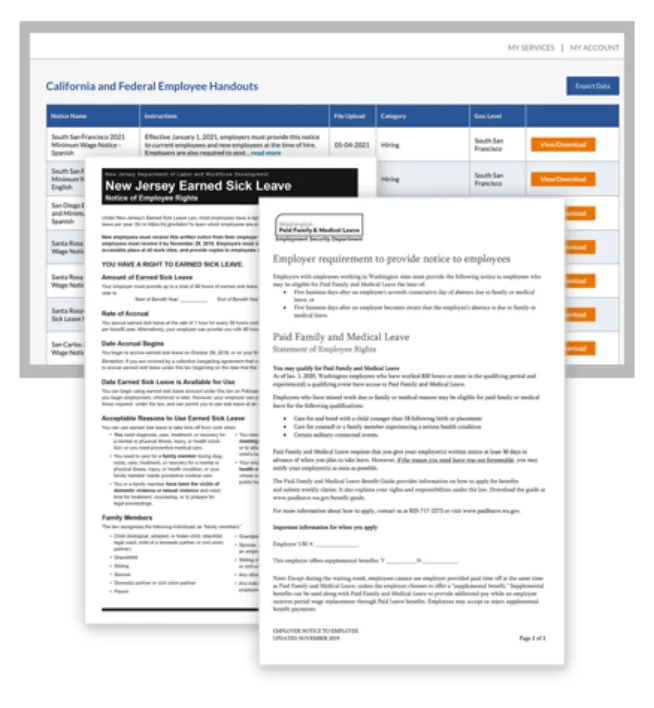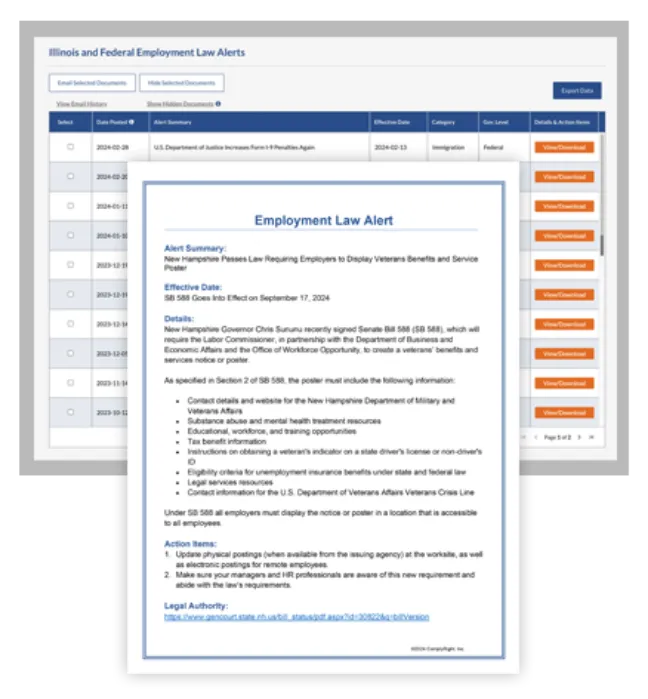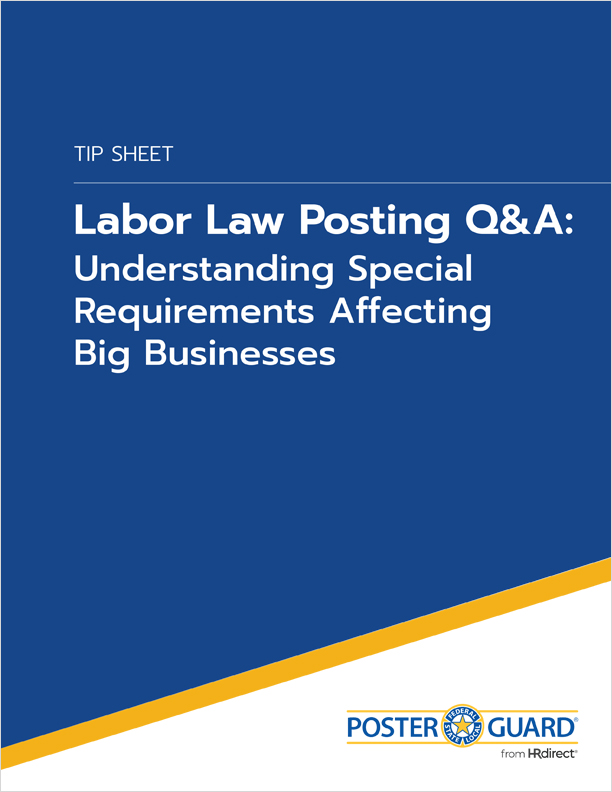In any discussion about employee wages, it’s easy to get confused between the terms “minimum wage,” “prevailing wage” and “living wage.” But it’s important to understand the nuances between them. Each term refers to different things – and depending on your business, will impact what you pay your workers.
Let’s start with the easiest, most widely recognized, term:
Minimum wage is the lowest allowable rate of pay for employees under the Fair Labor Standards Act (FLSA). Currently, the federal minimum wage is $7.25 per hour, but 30 states plus D.C. have higher minimum wages. The key factor regarding minimum wages is that when the federal, state or local rates vary, you must pay employees the highest rate that applies.
States with highest minimum wages*:
Arizona - $13.85
California - $15.50
Colorado - $13.65
Connecticut - $15
Massachusetts $15
New Jersey (6+ employees) - $14.13
Washington - $15.74*Effective Jan. 1, 2023
How is the minimum wage for any given state, county or city determined? Although this is a complex matter that can’t be quickly summarized, there is a particular item that impacts decision making. The Consumer Price Index (CPI) is a measurement of the average change in prices paid for a collection of consumer goods and services, such as transportation, food and medical care. For government agencies, the CPI can act as a solid indicator of where prices are going, as well as how much a dollar of income will purchase.
Similarly, employers may use the CPI as a benchmark for determining annual cost-of-living adjustments.
What, then, do we mean by prevailing wage?
Prevailing wage is the rate of pay that applies to any contractors or vendors doing business with a government agency. The federal government and many states have adopted a prevailing wage to prevent non-union employers or contractors from reducing employee compensation to outbid projects. Typically, a prevailing wage will be higher than the federal or state minimum wages. In fact, as of January 2023, certain federal contractors must now pay $16.20/hour.
Specifically, the federal Davis-Bacon Act of 1931 mandates that all laborers, contractors and subcontractors be paid a prevailing wage for any public works projects over $2,000. This typically applies to workers in construction, building and building services, such as gardeners, security guards and janitors. Furthermore, individual states may dictate the types of employees covered, such as part-time, temporary or seasonal employees, as well as independent contractors.
Lastly, what is a living wage?
And now, that leaves us with the term, “living wage.” This one is a little trickier because it’s more of a concept than an actual legal requirement. A minimum wage is mandated and enforceable by the Department of Labor (DOL), whereas a living wage is not.
A living wage implies the lowest hourly amount an individual must earn to meet basic expenses in any given state or city, depending on marital status, number of children and other cost-of-living considerations. It’s not unusual for the topic of a living wage to enter into legislative and policy discussions regarding minimum wages. For example, proponents of a higher federal minimum wage argue that an increase would help more of today’s “working poor” to achieve a fair living wage. While that may true, many small business employers raise concerns that they wouldn’t be able to afford to pay significantly higher wages and remain profitable.
According to the Living Wage Calculator, a working adult with two children in Seattle, WA would need to make a living wage of $53.30 to cover food, child care, medical, housing, transportation and other expenses vs. $39.46 for the same scenario in Memphis, TN.
Stay Current with the Minimum Wage Monitor™ Premium Service
Depending on where your business operates – as well as the type of business (such as private employer or federal contractor) – you’re responsible for providing at least the minimum wage or prevailing wage.
Need help keeping up with minimum wage changes? The Minimum Wage Monitor™ Premium Service provides current, past and future minimum wage rates by state, county and city for all 50 states, plus the District of Columbia and Puerto Rico. The service includes an interactive, color-coded map with real-time data maintained by our in-house legal team, as well as automated email notifications whenever minimum wage laws are passed or change. To help ensure compliance, you’ll also receive recurring reminder emails 30 days before a new rate takes effect.







